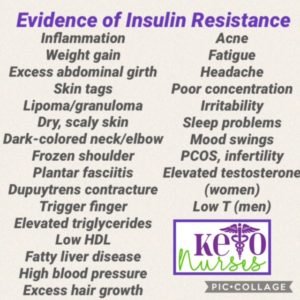I often get the question, “what is keto?” Sometimes, I hear, “keto’s dangerous.” Various myths surround the word “keto” and ketogenic eating. So, I thought I’d address some of these common myths and tell you the real truth about keto.
Ketogenic diets were first used therapeutically in the early twentieth century; prior to the development of medications for seizures, a keto diet was prescribed to manage epilepsy and seizure disorders with fairly good results. Today, it is prescribed by medical providers and typically provides 3 or 4 grams of fats, preferably medium-chain triglycerides, to every gram of protein consumed. Ketogenic eating is often closely monitored by medical providers and dieticians when used to control or reduce seizure activity. Studies have shown a 50% reduction in seizure frequency in half the people who try it, and in about 1/3 of people that use it, a 90% reduction.
Stories abound of medical providers in the early 1920s of “curing” seizure patients with fasting and low carbohydrate eating; once medications were introduced, ketogenic eating fell by the wayside until media mogul, Jim Abrahams, had a son with epilepsy that was difficult to manage with medications. Dateline featured Charlie on an episode in 1994, where the family discussed their great success with ketogenic eating to reduce seizures. This huge improvement prompted Abrahams to create The Charlie Foundation to help educate others about ketogenic eating as a treatment for seizures. Throughout the 1990s, much scientific interest focused on ketogenic eating, and eventually, the movie, Do No Harm, was released; Meryl Streep starred in the story about a boy whose seizures were managed with a low carb, ketogenic diet.
Not long afterwards, Dr. Robert Atkins made the Atkins diet very popular among dieters; he published books and products geared to help people lose weight using high protein versions of ketogenic eating. Atkins popularized keto eating significantly and his diet books and products remain popular today, even though the newest version of “the Atkins diet” is much higher in carbohydrates than his original plan.
With the use and popularity of the internet, more and more information became available over the last 20 years or so. Research articles that once only appeared in expensive medical journals were making their appearance online and to the average consumer. People tired of using the same old diet advice they’d heard for 50+ years, only to discover they gained weight, became diabetic or even BOTH. Bloggers began writing about their personal successes with keto dieting; their before and after photos spoke volumes and their following amassed.
However, many nurses and doctors began to strike fear in the hearts of these keto-ers, and they began to say ketogenic eating is unhealthy & dangerous. Because their only knowledge of keto had always been associated with diabetic ketoacidosis, most providers shunned keto diets, and instructed their patients to “stop it immediately because it’s terribly dangerous.” Patients were then stuck between a rock and a hard spot, so to speak. They respected their providers – well-trained and highly educated physicians, nurses, & dieticians, but they also were firm in the belief that their health was better than ever before – terrific weight loss, lower glucose, improved A1c, and even healthier cholesterol levels. How could this be? How could something so helpful to so many be disregarded with prejudice by such educated medical professionals?
As I mentioned before, diabetic ketoacidosis is a very dangerous complication of diabetes and very, very high glucose levels; it’s most common in Type 1 diabetes, but does occasionally occur in Type 2. When DKA occurs, glucose levels are typically over 300, ketone levels in the blood are very high, and electrolyte levels get really out of balance. Potassium levels most often go very high, and this is one of the major reasons DKA can be life-threatening. Potassium is vital for all muscle function in the body; too much potassium can cause extra-excitability or overstimulation to muscles – the heart muscle just cannot tolerate such stimulation; this excess stimulation can result in very dangerous heart beats and rhythms; some are deadly.
Can you see now, why many providers hear only PART of the word and freak out? Let’s take a look at the entire phrase: diabetic ketoacidosis. It occurs in people with diabetes and typically with very high glucose levels, usually over 300. Normal glucose is less than 120. The blood and urine will both exhibit high levels of ketones AND, electrolyte levels get so imbalanced that the blood is very acidic. When this state persists for even a few hours, the person:
can become terribly confused,
complain of fatigue and loss of appetite,
may have shortness of breath, blurry vision, vomiting,
or exhibit an imbalanced gait.
All of these signs and symptoms are observed in concert, NOT in isolation, to make the diagnosis of DKA. This condition requires careful insulin dosing and specific medical treatment, and is done within the hospital because of the dangerous electrolyte imbalances that can trigger fatal symptoms. People are often on heart monitors, IV fluids, and round the clock glucose checks and routine insulin injections for 2-5 days.
Now, imagine that the above setting is the only place you’ve ever head the word part, keto. What would YOU think if you heard it at the local community center? Or in a chat with a friend? Or maybe online in a social media post? Thus, the fear of the word “keto” was born.
Have no fear, however! Keto is a word PART – not a whole word. As a word part, all it means is that ketones are produced in the body. Just as we discussed above, ketones ARE present and elevated in DKA. But ketones can also be present during a stomach bug because vomiting & diarrhea can alter the body’s use of fuel, causing a NATURAL state of ketosis. Ketosis simply means that the body is burning fats instead of sugars for energy.
Burning sugars for fuel is easier for the body and so, the body will follow the path of least resistance; it will burn glucose for fuel as long as it’s present in the bloodstream. However, the bloodstream only WANTS about 4 grams or 1 teaspoon of glucose floating around in it all the time. So there may not always be a steady amount of glucose for all the activities your body wants to enjoy. A good example is a workout at the gym; how many of you “carb-up” prior to your workouts? Why? Because the 4 grams of glucose is not sufficient to meet the energy needs of your workout. The major problem is that the body isn’t going to let all that glucose STAY in the blood and a lot of it won’t be needed for exercise; so, intake of glucose triggers the pancreas to release insulin. Insulin’s job is to quickly move glucose OUT of the bloodstream; insulin transports glucose out of the blood and INTO fat cells for storage. If we were meant to consume huge amounts of carbohydrates, don’t you think our bodies would be much more tolerant of having hundreds of grams of glucose INSIDE the bloodstream? This erratic process results in very high glucose levels that alternate with very low glucose levels, and can eventually contribute to symptoms of fatigue, thirst, and frequent urination – or diabetes.
However, if we restrict carbohydrate intake, the blood level of glucose stabilizes, less insulin is needed to manage the carb intake, and the fluctuating peaks and valleys of glucose control fades into a much more stable range because the body learns to be fueled by ketones. Ketones are made in the liver from fatty acids. Fatty acids are the smaller components of the fats we eat. One of the most common ketones is beta-hydroxybutyrate that is a fatty acid our bodies obtain during the digestion and breakdown of butter; in fact, it is butter’s namesake. This particular ketone is used for energy and is also helpful in digestive processes; it crosses the blood-brain barrier, and is thought to be of clinical relevance in treatment of epilepsy, depression, anxiety, and even cognitive impairment. Now, don’t you want to add MORE butter to your plate today?
Can you see now, how the use of ketones for fuel is actually healthy and beneficial? And how ketosis and ketoacidosis are 2 totally different and separate concepts? Ketosis is a natural process the body uses for fueling activities, and ketoacidosis is a terrible and dangerous health condition associated with out-of-control sugar levels.
Another common question I hear often is about testing for ketones “to be sure I’m in ketosis.” Well, you certainly CAN test for ketones, but testing can get expensive and if you’re consuming less than 20 grams of carbohydrates daily, your body WILL go into ketosis. It won’t have a choice. Our bodies need fuel – either glucose or ketones are the preferred fuels. During the transition period, people do report bad breath as a result of increased ketones in the blood. The body actually is a bit confused at first; it’s been burning glucose for all these years and now, there’s no glucose coming in to the system. So, the body senses a need to rid itself of “excess” ketones, so you exhale some and some are expelled in urine; a few accumulate in blood. After about 4-8 weeks (on average), most people will have become “fat-adapted” and will no longer experience bad breath or ketones in the urine. Why? Because the body has learned to utilize all the energy available; it won’t continue to “spill” or waste the fuel it needs for body processes. Testing after this length of time is often frustrating to people who think that somehow, they are no longer in ketosis. That is NOT true, however. It’s simply a matter of efficiency; the human body doesn’t waste much; it’s wired to conserve, reserve, and reuse many chemicals and products. Ketones are fuel for the body and will NOT be routinely wasted.
Testing for ketones is pretty unnecessary for most people eating a low carb diet; for people with very high glucose levels, it may be necessary during the transition phase from high carb to low carb eating, because of the risk for developing DKA. Urine & breath testing aren’t always reliable, and once fat adapted, you won’t be spilling any ketones in either of these waste products. Blood ketones can be tested, if necessary, and is the most accurate measure. The image below is from the book, The Art & Science of Low Carb Living, by Jeff Volek and Steve Phinney. In this image, you can see the area of optimal blood ketones is MUCH lower than those typical of a patient in ketoacidosis (far right). You can also see by the rise in the green curve that the brain and muscles function optimally in this healthy range of blood ketones. Ketosis is the natural process by which the body uses fats, or specifically ketones, for fuel. It is normal and natural. It is not dangerous. It won’t cause harm.
Hopefully, this article has provided you with a decent amount of information that will help you understand ketosis and how it impacts our bodies and health. For more personalized help, please feel free to send me a PM via Facebook or Twitter.




